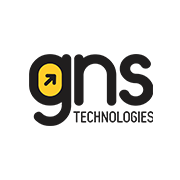The world revolves around the internet. Websites form the backbone of the internet. A website must be user-friendly, and the users also must find it interesting. Websites consist of web pages. A web page must be interactive. To design a web application, a programming language must be used. A combination of Front-end and Back-end languages is used to create a web application.
Full Stack
Developers that work throughout the whole depth of a computer system program, or “full stack,” are involved in both the front and back end of web development. Everything a client, or site visitor, can see and interact with is included in the front end. The end-user rarely engages directly with the back end, which is all the servers, databases, and other internal architecture that power the program.
What is Front End Development?
Front End Development is used to make the websites interactive. It creates options available such as playing videos, watching videos, etc. There are three essential programming languages used in Front-End development: HTML, CSS, and JavaScript.
We’ll now examine the explanation of Hyper Text Markup Language (HTML), Cascading Style Sheet (CSS), and JavaScript.
- i) HTML
HTML stands for Hyper-Text Markup Language. It is used in the creation of web applications. HTML consists of Tags, such as the Body tag, the Head tag, the Paragraph tag, the Title tag, and so on.
- ii) Cascading Style Sheet (CSS)
Cascading Style Sheets are used to set the style of web pages that contain HTML elements (CSS). It alters the web page’s elements’ background color, font size, font family, color, etc.
There are three types of CSS:
- Inline CSS
- Embedded CSS
- External CSS
- Inline CSS
Inline CSS refers to the presence of CSS properties in the body section of an element. The style attribute is used in an HTML tag to provide this style.
- Embedded CSS
It is used when only one HTML document has to be formatted differently. The CSS is included in the head section of the HTML file because that is where the CSS rule set should go.
- External CSS
With the use of tag attributes (such as class, id, header, etc.), external CSS includes a second CSS file that contains style properties. CSS properties should be linked to the HTML document using the link tag and are written in separate files with the.css suffix. This indicates that just one style can be selected for each element, and that style will be used throughout all web pages.
Properties of CSS
The order of priority is Internal/Embedded, Inline CSS, External CSS, and External CSS has the lowest priority. On a single page, several style sheets can be defined. If styles are defined for an HTML tag in more than one style sheet, the order listed below will be honored. Inline styles supersede any classes defined in the internal and external style sheets since Inline has the highest priority. The techniques in the external style sheet are overridden by interior or embedded styles, which are given the second precedence. The least essential style sheets are external ones. External style sheet rules are applied to the HTML tags if neither internal nor inline styles have been established.
iii) Javascript
A dynamic computer programming language is called JavaScript. Its implementations enable client-side scripts to interact with users and create dynamic pages, and it is most frequently used as a component of web pages. It is an object-oriented programming language that may be interpreted.
Client Side JavaScript
Client-side, The most popular variation of the language is JavaScript. For the script’s code to be recognized by a browser, it must be incorporated into or referenced from an HTML document.
It implies that a web page need not be static HTML but may contain programs that communicate with users, manage browsers, and generate HTML content on the go. Over typical CGI server-side scripts, the JavaScript client-side method offers several benefits. JavaScript, for instance, can be used to determine whether a user has supplied a valid email address in a form field. When a user submits a form, JavaScript is run, and only if all of the entries are correct are they sent to the web server.
Advantages of JavaScript
- i) Interaction with the server is less.
- ii) Visitors get immediate feedback or a response.
iii) Interfaces can be created in such a way that it is interactive.
- iv) It is also used for drag-and-drop components.
What is Back-End Development?
The “backend development” phase concerns a website or web application’s internal workings. Making sure that end users receive the data or services they request promptly and flawlessly is the primary duty of a backend developer. As a result, backend development needs a broad range of programming abilities and knowledge.
Some of the fundamental Back End development languages used are listed below.
- i) JAVA
- ii) PYTHON
iii) Ruby on Rails
- i) JAVA
JAVA is an Object Oriented Programming language. It is based on classes and objects. JAVA is also an open-source language that can be used to develop web applications. It has in-built libraries which help in developing web applications.
- ii) PYTHON
PYTHON is an open-source programming language. It is used in Data Science and Machine Learning to forecast growth. Apart from this, it is also used in designing web applications. It plays a vital role in developing web applications.
iii) Ruby on Rails
A free tool called Ruby on Rails is used to build a web application. A framework for the Ruby programming language, Rails is mainly used to create server-side web applications. It is, in a nutshell, a RubyGem-bundled library. For tasks that are deemed repetitious, a library called Ruby on Rails application contains ready-made solutions.
Conclusion
In this article, we have discussed the technologies that are required to become a Full Stack Developer. We have also differentiated between Front End and Back End technologies. We have discussed the different Front End and Back End technologies, such as HTML, CSS, JavaScript, etc. Full Stack Developers are in great demand by top product-based companies. How can a candidate be equipped with the skills of Full Stack? Many institutes train candidates in the field of Full Stack. At SkillSlash, candidates are provided with 1:1 mentorship. Skillslash also has in store, exclusive courses like Data Science Course In Chandigarh, Full Stack Developer Course in Mysore and Data Structure courses to ensure aspirants of each domain have a great learning journey and a secure future in these fields.
Sounds amazing, doesn’t it? Contact the student support team today to know more about the program and how it can benefit you.




